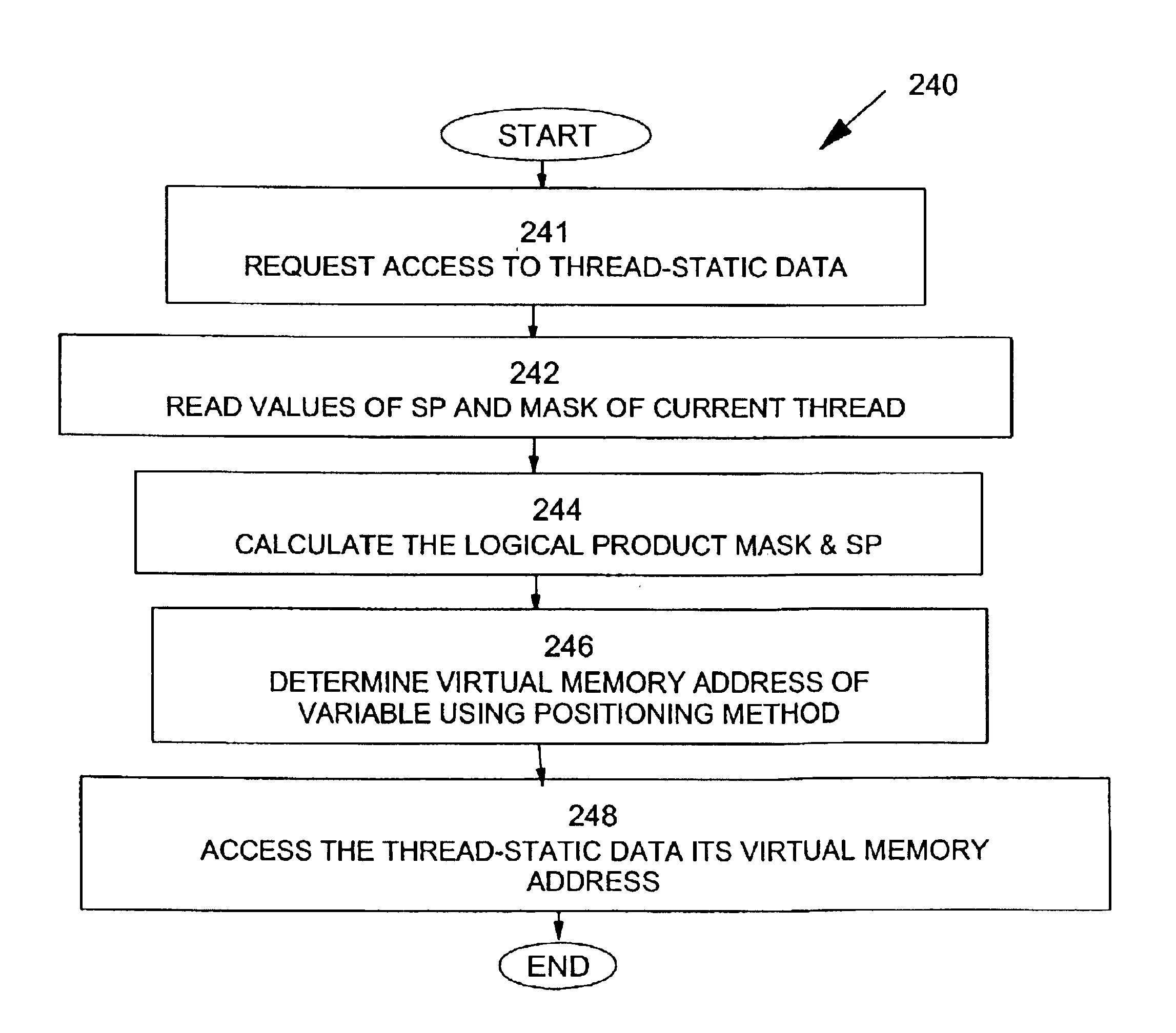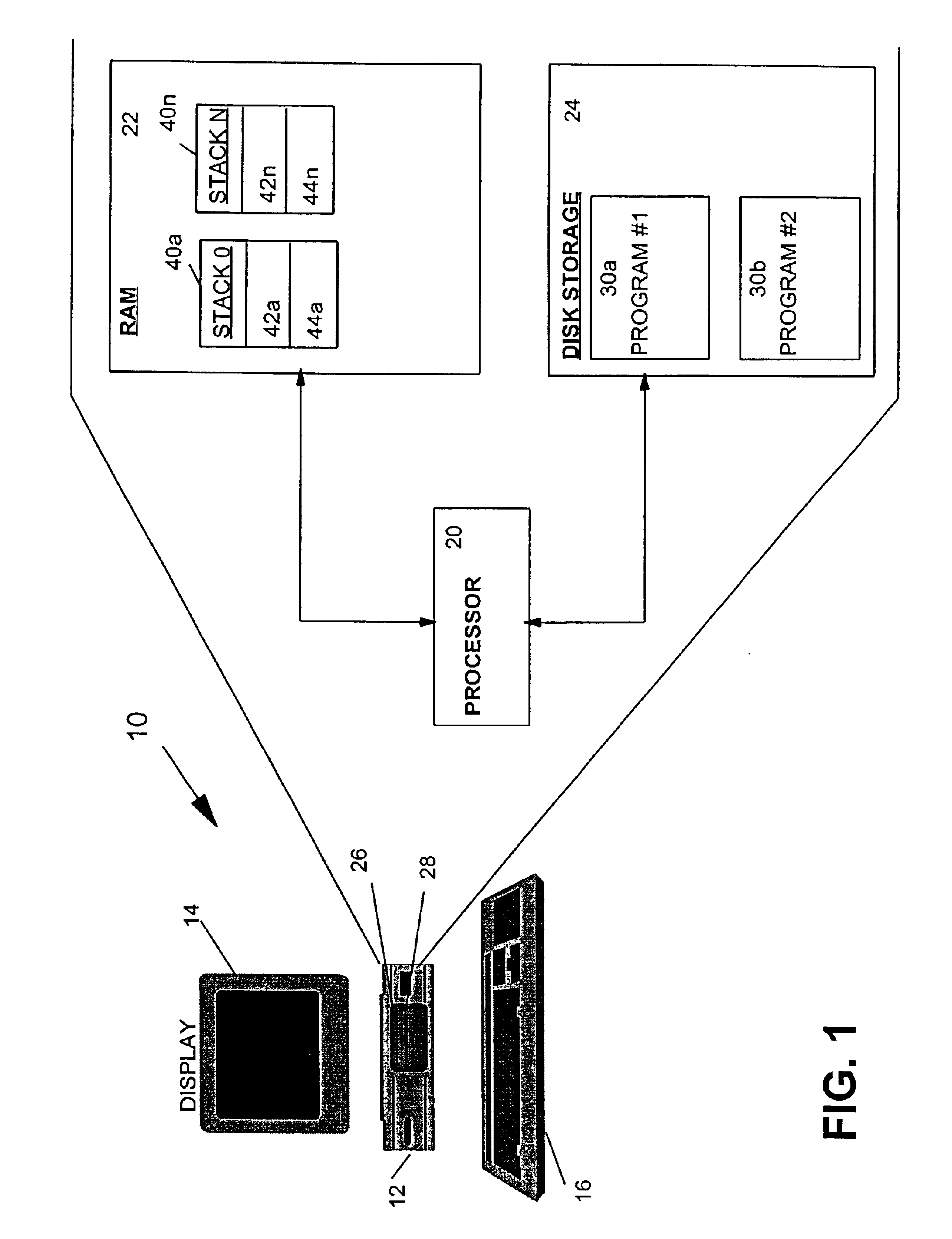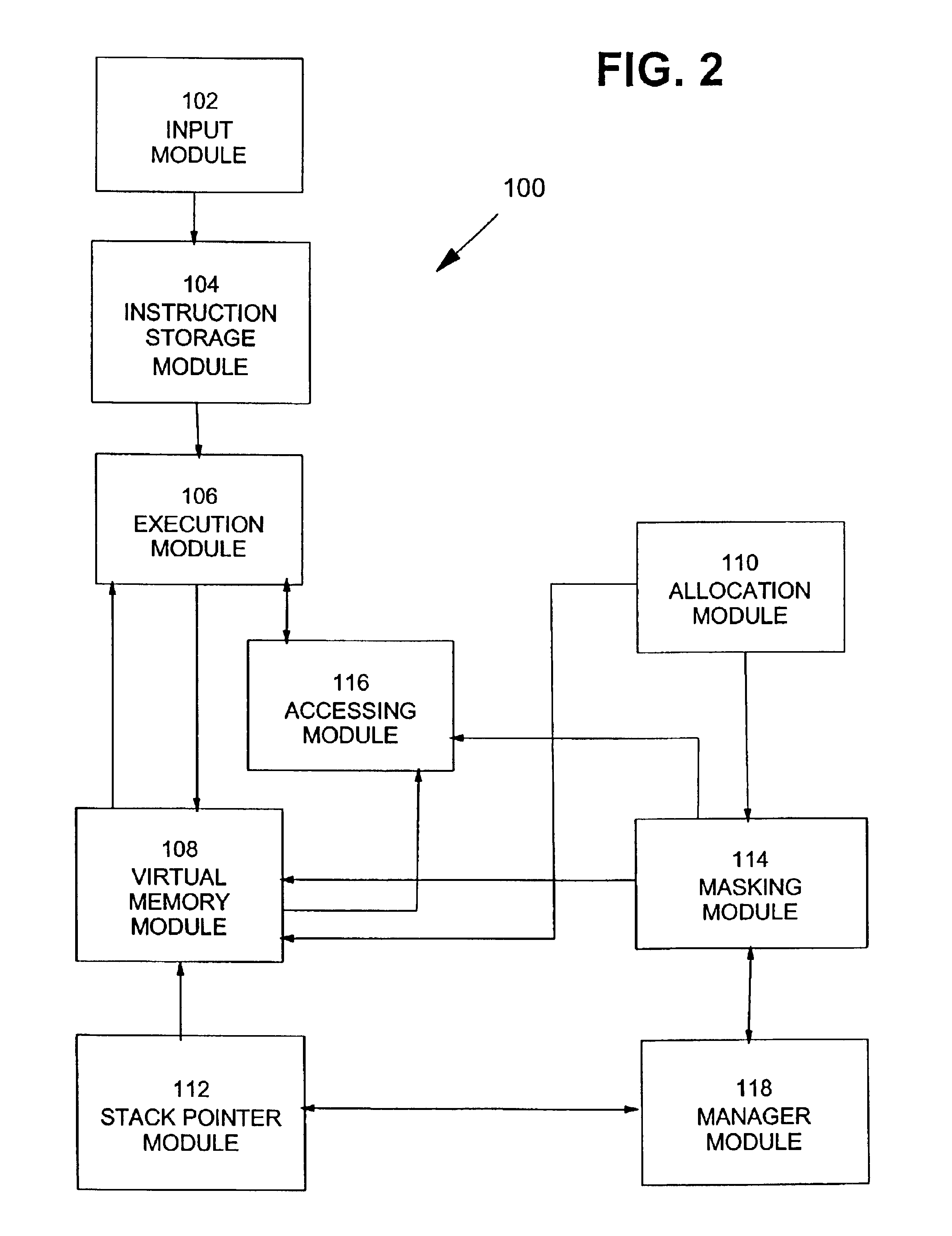Implementation of thread-static data in multi-threaded computer systems
a computer system and multi-threaded technology, applied in the field of computer systems, can solve the problems of not being able to execute multiple threads simultaneously, posix standard has not been uniformly adopted, and it is difficult to develop portable multi-threaded programs that can be used on different systems without recoding, etc., and achieves the effect of convenient access
- Summary
- Abstract
- Description
- Claims
- Application Information
AI Technical Summary
Benefits of technology
Problems solved by technology
Method used
Image
Examples
Embodiment Construction
[0032]Reference is first made to FIG. 1 which shows in diagrammatic form a computer system indicated by reference 10 for operating a thread-static data mechanism in accordance with the present invention.
[0033]The computer system 10 as shown in FIG. 1 includes a processing unit 12, a display unit 14, and a keyboard 16 and other input devices such as a mouse (not shown). The processing unit 12 is configured in a conventional manner and includes one or more processors 20, random access memory or RAM 22, and mass storage devices, such as a hard disk drive 24, a compact disk or CD drive 26, and a floppy disk drive 28. Computer or application programs 30, indicated individually by references 30a, 30b, are installed on the hard disk drive 24, and instructions for the computer program 30 are executed by processor 20 in RAM 22. The computer program product 30 may include application programs such as the DB2TM database management system from IBM. In the context of the present invention, the c...
PUM
 Login to View More
Login to View More Abstract
Description
Claims
Application Information
 Login to View More
Login to View More - R&D
- Intellectual Property
- Life Sciences
- Materials
- Tech Scout
- Unparalleled Data Quality
- Higher Quality Content
- 60% Fewer Hallucinations
Browse by: Latest US Patents, China's latest patents, Technical Efficacy Thesaurus, Application Domain, Technology Topic, Popular Technical Reports.
© 2025 PatSnap. All rights reserved.Legal|Privacy policy|Modern Slavery Act Transparency Statement|Sitemap|About US| Contact US: help@patsnap.com



